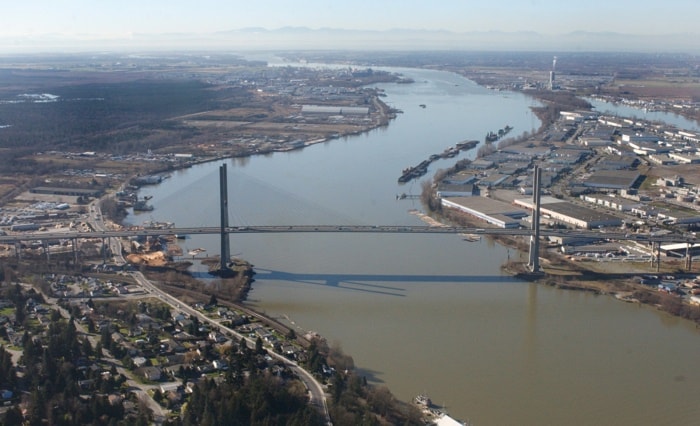Despite a burgeoning Lower Mainland population and an ongoing development boom, researchers have found no evidence that localized pollution or habitat damage is a major factor in the decline of Fraser River sockeye salmon.
In fact, they argue habitat along the lower Fraser and in the Strait of Georgia has improved over the past two decades, thanks to tightened industrial, development and discharge regulations.
That's the core finding of a technical study commissioned by the Cohen Inquiry into the sockeye decline and led by Dr. Mark Johannes of Golder and Associates.
Researchers looked at population – which rose 150 per cent over the 1990 to 2010 study period – as well as impacts from farming, forestry, industry, sewage discharges, shipping traffic and river dredging and diking.
The heavier human footprint on southwestern B.C. through urbanization and other actions has not translated into more pollution in the receiving waters, they found.
"Contaminants in the Strait of Georgia show a general improvement over time, with decreases associated with effluent regulation and improved treatment in recent years," the study report said, pointing to better treatment of sewage by Metro Vancouver before it's released.
Construction that disturbs fish habitat is also better regulated, it said, resulting in net habitat gains in the Fraser estuary due to the duty of developers to enhance or replace damaged areas.
Juvenile sockeye swim through the lower river, its estuary and out into the Salish Sea before heading deeper into the Pacific Ocean.
During that transition period, they're sensitive to changes in water properties and levels of food, competitors and predators.
Migrating sockeye historically faced "moderate to severe" harm from human activities, the study noted.
"But these impacts have not been generally observed during the last two decades and importantly, these impacts have not been observed to coincide with the decline of Fraser River sockeye."
The authors noted that sockeye use the lower river only for a period of days while migrating.
They caution their conclusions regarding sockeye don't necessarily apply to other species in the river or offshore – particularly ones that spend more time in the area than sockeye.
There's still plenty of room for improvement on habitat protection and control of discharges, the report said.
Victoria still dumps raw sewage in the ocean although it is planning an upgrade and Metro Vancouver is planning costly upgrades to bring two of its plants with primary treatment up to the secondary level.
But the report warned climate change and diminishing space near the river and its tributaries is making it more challenging to achieve habitat gains that can compensate for losses.
The study is one of a series of 12 technical reports being prepared by the commission.
Much evidence to date suggests enough sockeye are hatching in the upriver spawning beds, growing into smolts and then migrating successfully down to the ocean.
If sockeye aren't vanishing in the lower river and the immediate marine waters, the search for a culprit will likely shift further offshore.
Christianne Wilhelmson, executive director of the Georgia Strait Alliance, agrees there have been gains – pulp mills, for example, dump much less dangerous toxins than they did a couple of decades ago.
But she doesn't yet discount the possibility cumulative local impacts are a factor causing the sockeye decline.
"It's the challenge of the inquiry of finding one smoking gun," Wilhelmson said. "Chances are it's death by a thousand cuts."
The Cohen commission was named after the collapse of the 2009 sockeye run, when just over a million fish returned, about a tenth the expected number. A huge return last year is thought by many experts to be an anomaly in a long-term decline.
